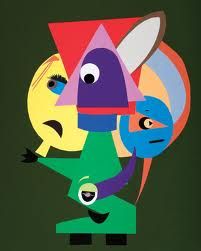 After years of teaching primarily STEM (science, technology, engineering, and mathematics ) educational programs, the scores on science tests have not improved precipitously. Teachers and educational researchers realized that by adding an "A" --for ART-- student learning would pick up STEAM! By adding Art and project-based learning back into the mix, scores on science tests, as well as math tests, have shown marked improvement.
After years of teaching primarily STEM (science, technology, engineering, and mathematics ) educational programs, the scores on science tests have not improved precipitously. Teachers and educational researchers realized that by adding an "A" --for ART-- student learning would pick up STEAM! By adding Art and project-based learning back into the mix, scores on science tests, as well as math tests, have shown marked improvement.Stem had been founded and funded as a way to increase SAT and ACT scores in science and mathematics; and to provide the foundational skills necessary to get teacher accreditation in these modalities.
But, not all ideas are perfect at inception...some of them need a bit of tweaking! Funding for STEM programs was a step in the right direction, and making sure teachers are up to speed in the ever-changing worlds of technology and engineering, is also a great idea; however, the scores on math and science tests did not reflect the additional skill level they were intended to produce.
That is why math and science education is under review again, and why programs like Crafternoon Delights are gaining momentum. The two main questions being asked are, " Why are these curricula being viewed as exclusive of other modalities?" and "Why have so many schools dropped Arts education from their curriculum?"
Under the STEM philosophy, Art and Science education were viewed as separate disciplines that demanded different teaching methods. However, as we have delved deeper into the ways in which we learn, it has become clear that Science and Art, as well as Math and Music are intrinsically related!
Crafternoon Delights was founded upon the philosophy that teaching through project-based learning that used Art and Craft as the basis for demonstrating STEM principles would create a greater understanding of core concepts.
Crafternoon Delights was founded upon the philosophy that teaching through project-based learning that used Art and Craft as the basis for demonstrating STEM principles would create a greater understanding of core concepts.
Educational researchers now recognize the importance of integrated education and that project based learning that has a foothold in Art, is the perfect compliment to higher level thinking. Art puts the STEAM in STEM! Using project based integrated education curriculum, students are able to see how the knowledge they garner in science education is important to all aspects of everyday life. The whole basis of integrated education is to teach real-world application of the math and science education principles.
Form and function are the guiding principles in integrated education that uses Art as the glue. Art is now being recognized as more than decorative or illustrative, but that it also represents an essential part of the process of inquiry, such as problem finding, problem solving, and communication. The elements of design in art are applicable to life and all the modalities of education.
The impetus that propels people to excel at mathematics and science education or engineering and art education are generally the same..the desire to discover the deeper intricacies in the world. The integration of Art into technologies such as engineering has always been recognized in the “form and function” debate. Does form follow function or does function follow form? Either way, Engineering and Art are fundamentally linked. Take cars as an example: From the Model-T to the newest concept car, the evolution of technology is as much about the aesthetic and design (form) of the car as it is about functionality.
The fundamental concepts of form and function are primarily the same. Line, shape, color, structure/function as well as sequencing, motion, and patterning are terms of language in science education and art education. Students who are taught in integrated education project-based learning programs develop a clearer understanding of the underpinnings of science and how these principles can be extrapolated to solve existing and future problems. Educators are now seeing that students who previously had difficulty in STEM classes are quickly picking up STEAM!
Further resources:
Crafternoon Delights: Integrated Education Is Picking Up Steam!
Science Education and Art Education:The Perfect Pair
Further resources:
Crafternoon Delights: Integrated Education Is Picking Up Steam!
Science Education and Art Education:The Perfect Pair
No comments:
Post a Comment